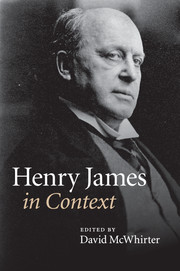Book contents
- Frontmatter
- Contents
- List of Illustrations
- Notes on Contributors
- Preface
- Abbreviations
- Chronology
- Part One Life and career, times and places
- Part Two Historical and cultural contexts
- Part Three Reception
- Chapter 37 Publishing history and contemporary reception
- Chapter 38 Critical response, 1916–1947
- Chapter 39 Critical response, 1947–1985
- Chapter 40 Recent criticism (since 1985)
- Chapter 41 Translation and international reception
- Further reading
- Index
- References
Chapter 39 - Critical response, 1947–1985
Published online by Cambridge University Press: 05 August 2014
- Frontmatter
- Contents
- List of Illustrations
- Notes on Contributors
- Preface
- Abbreviations
- Chronology
- Part One Life and career, times and places
- Part Two Historical and cultural contexts
- Part Three Reception
- Chapter 37 Publishing history and contemporary reception
- Chapter 38 Critical response, 1916–1947
- Chapter 39 Critical response, 1947–1985
- Chapter 40 Recent criticism (since 1985)
- Chapter 41 Translation and international reception
- Further reading
- Index
- References
Summary
Although Henry James died in 1916, the worth of his art is still in question, and the question can still cause high temperatures among his critics. On hearing that the present volume was being planned, a well-known American novelist wrote the editor: ‘Now more than ever I believe that the H. J. boom is the gravest thing that has happened to our U.S. culture in our time’. On the other hand, a respected periodical lately devoted an entire issue to appreciative studies of James’s work – it was the fourth such symposium upon him since his death. Obviously Henry James is not an author whom it is easy to take or leave.
With these words, F. W. Dupee opened the introduction to his 1945 anthology, The Question of Henry James – equally a summa of much of the best James criticism of the preceding half-century and a kick-off to the James boom to come. Some forty years later, critical temperatures were still running high. Mark Seltzer wrote of the ‘criminal continuity’ between Henry James and the art of power in his 1984 book of that name and Carolyn Porter placed James’s detached, voyeuristic ‘center of consciousness’ at the centre of the American novel’s ideological project. To a certain extent, these charges – with their conjunction of political critique and the claim that James indulged in a form of febrile aestheticism – seemed a throwback to the days of Van Wyck Brooks and Vernon Parrington. But a whole series of critical, theoretical and even institutional alterations – changes in the literary and critical canons, changes in the notion of what ‘literature’ is; changes in the ways in which ‘literature’ so constructed is to be interpreted and transmitted – had occurred in the forty years between Dupee and Seltzer, Porter and colleagues. And, not uncoincidentally, in that time James moved from the margins to the centre of literary value. His work was reissued in mass-market paperbacks and installed in ‘Intro to Lit’ courses; it became the object of countless dissertations, articles and monographs. When, in the 1980s, feminists, Marxists and Foucaldians sought to challenge prevailing orthodoxies, James served not only as a convenient target but also as a means for staking out their critique of the status quo.
- Type
- Chapter
- Information
- Henry James in Context , pp. 423 - 434Publisher: Cambridge University PressPrint publication year: 2010



